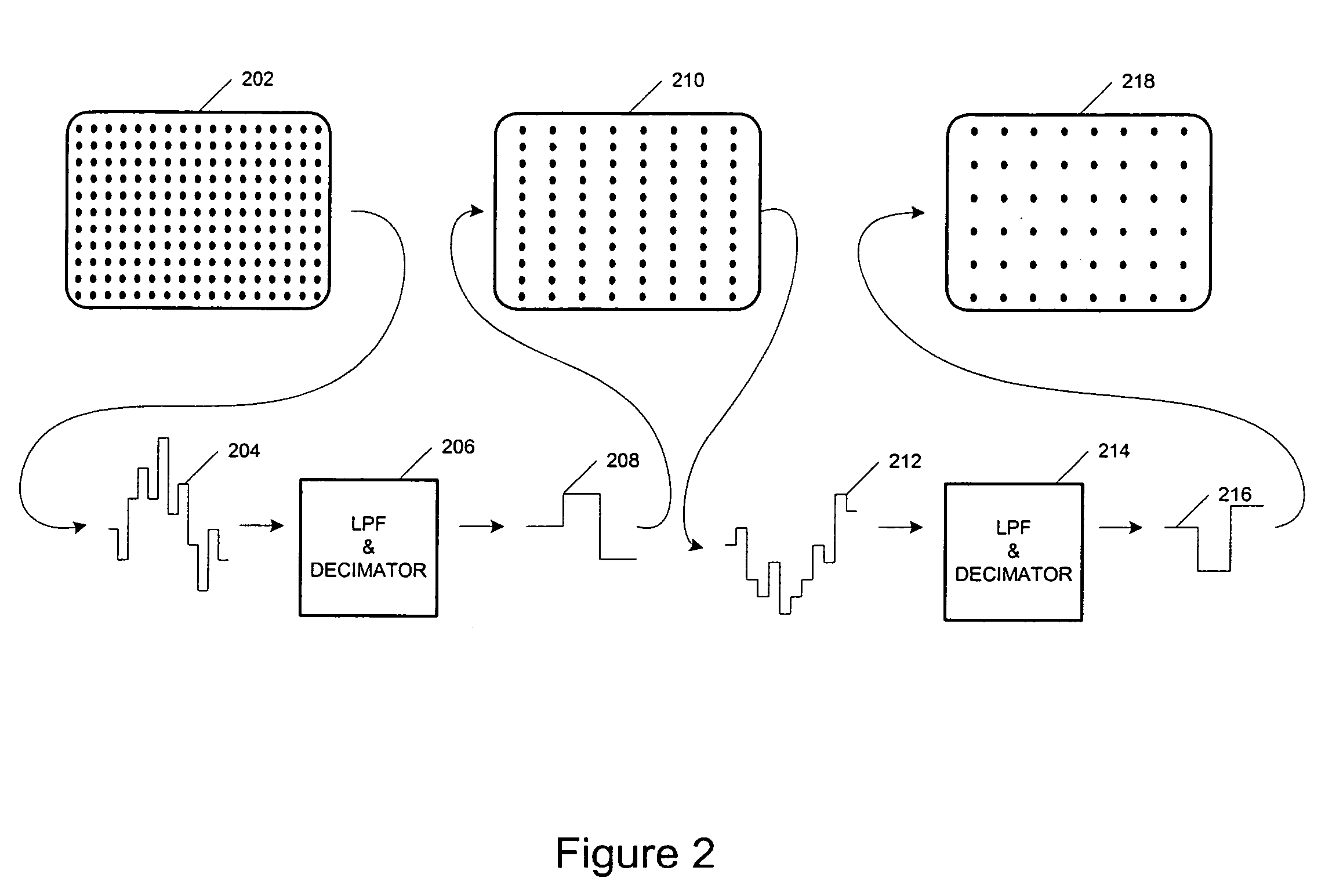Systems and methods for multi-dimensional enhancement using fictional border data
a fictional border and enhancement technology, applied in the field of multi-dimensional data processing, can solve the problems of loss, difficulty, loss, etc., in perceiving such low-contrast details, and the inability to control the illumination of video images, so as to improve image data, reduce the required processing overhead, and reduce the size of the kernel processing
- Summary
- Abstract
- Description
- Claims
- Application Information
AI Technical Summary
Benefits of technology
Problems solved by technology
Method used
Image
Examples
Embodiment Construction
.”
BRIEF DESCRIPTION OF THE DRAWINGS
[0011]Features, aspects, and embodiments of the inventions are described in conjunction with the attached drawings, in which:
[0012]FIG. 1 is a diagram illustrating an exemplary display of image data;
[0013]FIG. 2 is a diagram illustrating filtering, and decimation of image data in accordance with one embodiment of the invention;
[0014]FIG. 3 is a diagram illustrating interpolation of the filtered and decimated image data of FIG. 2 in accordance with one embodiment of the invention;
[0015]FIG. 4 is a diagram illustrating a 3-dimensional image that can be the subject of filtering, decimation, and interpolation similar to that of FIGS. 2 and 3;
[0016]FIG. 5 is a diagram illustrating an example circuit for filtering and decimating image data in one dimension in accordance with one embodiment of the systems and methods described herein;
[0017]FIG. 6 is a diagram illustrating an example circuit for filtering and decimating the image data of FIG. 5 in a second...
PUM
 Login to View More
Login to View More Abstract
Description
Claims
Application Information
 Login to View More
Login to View More - R&D
- Intellectual Property
- Life Sciences
- Materials
- Tech Scout
- Unparalleled Data Quality
- Higher Quality Content
- 60% Fewer Hallucinations
Browse by: Latest US Patents, China's latest patents, Technical Efficacy Thesaurus, Application Domain, Technology Topic, Popular Technical Reports.
© 2025 PatSnap. All rights reserved.Legal|Privacy policy|Modern Slavery Act Transparency Statement|Sitemap|About US| Contact US: help@patsnap.com



